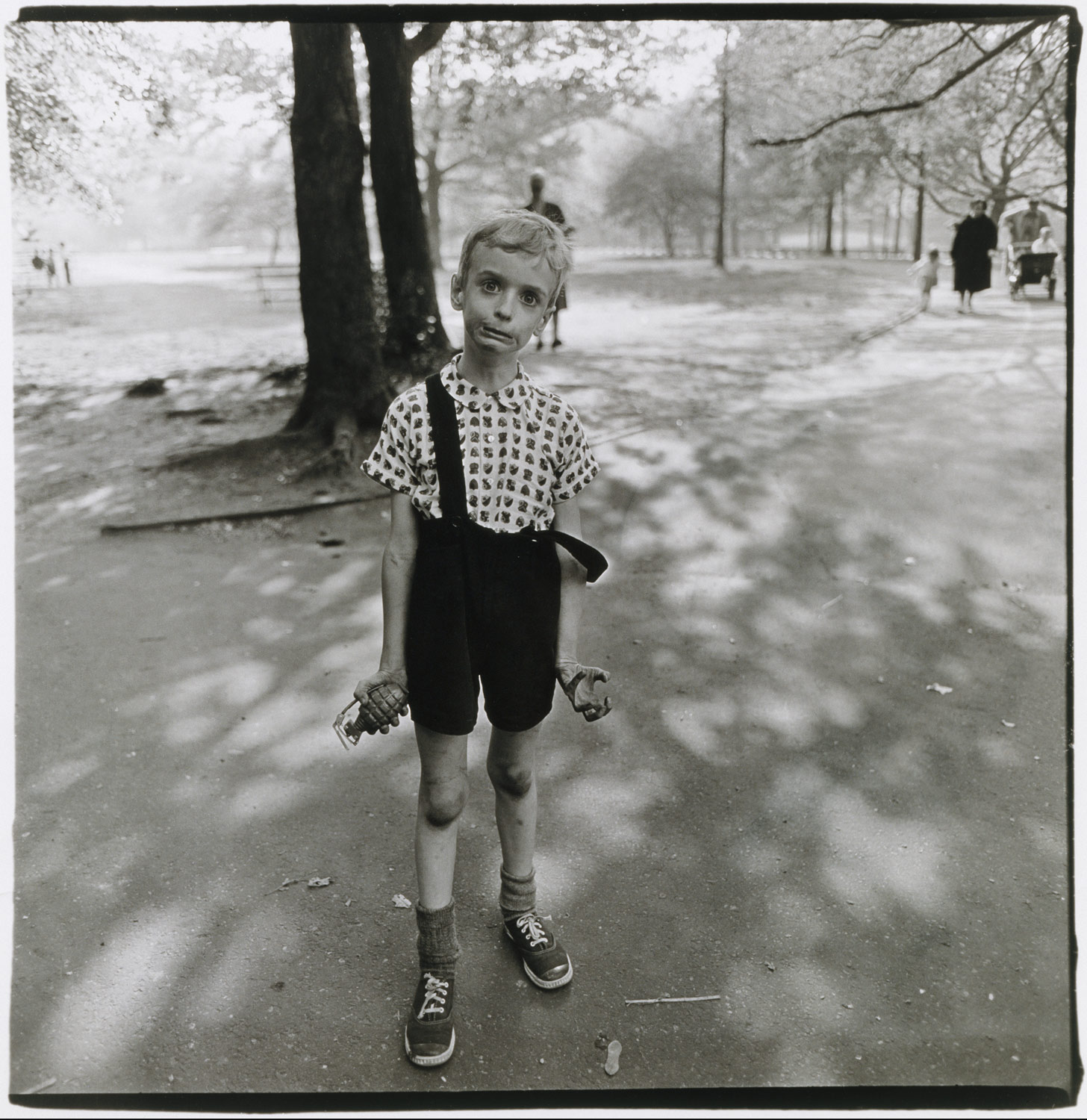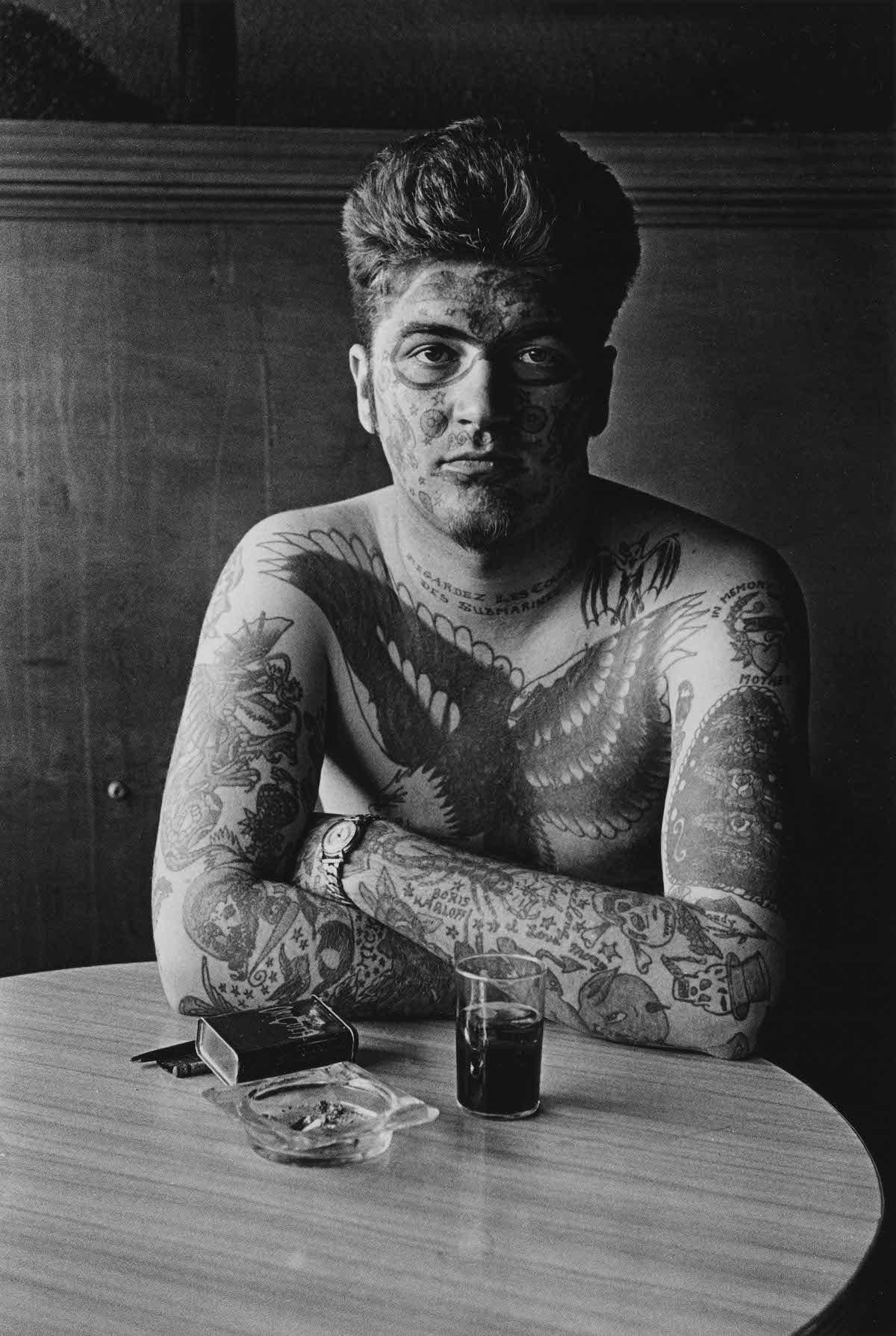Never-before-seen early work of Diane Arbus (1923–71), focusing on the first seven years of her career, from 1956 to 1962—the period in which she developed the idiosyncratic style and approach for which she has been recognized, praised, criticized, and copied the world over.
diane arbus: in the beginning

diane arbus: in the beginning focuses on seven key years that represent a crucial period of the artist’s genesis, showing Arbus as she developed her style and honed her practice. Arbus was fascinated by photography even before she received a camera in 1941 at the age of 18 as a present from her husband, Allan, and made photographs intermittently for the next 15 years while working with him as a stylist in their fashion photography business. But in 1956 she numbered a roll of 35mm film #1, as if to claim to herself that this moment would be her definitive beginning. Through the course of the next seven years (the period in which she primarily used a 35mm camera), an evolution took place—from pictures of individuals that sprang out of fortuitous chance encounters to portraits in which the chosen subjects became engaged participants, with as much stake in the outcome as the photographer. This greatly distinguishes Arbus’s practice from that of her peers, from Walker Evans and Helen Levitt to Garry Winogrand and Lee Friedlander, who believed that the only legitimate record was one in which they, themselves, appear to play little or no role. In almost complete opposition, Arbus sought the poignancy of a direct personal encounter.
Arbus made most of her photographs in New York City, where she was born and died, and where she worked in locations such as Times Square, the Lower East Side, Coney Island, and other areas. Her photographs of children and eccentrics, couples and circus performers, female impersonators and Fifth Avenue pedestrians are among the most intimate and surprising images of the era. From the beginning, Arbus believed fully that she had something special to offer the world, a glimpse of its many secrets: “I do feel I have some slight corner on something about the quality of things. I mean it’s very subtle and a little embarrassing to me but I really believe there are things which nobody would see unless I photographed them.”
Nearly half of the photographs that Arbus printed during her lifetime were made between 1956 and 1962, the period covered by this exhibition. At the time of her death in 1971, much of this work was stored in boxes in an inaccessible corner of her basement darkroom at 29 Charles Street in Greenwich Village. These prints remained undiscovered for several years thereafter and were not even inventoried until a decade after her death. The majority of the photographs included in the exhibition are part of the Museum’s vast Diane Arbus Archive, acquired in 2007 by gift and promised gift from the artist’s daughters, Doon Arbus and Amy Arbus. It was only when the archive—a treasury of photographs, negatives, notebooks, appointment books, correspondence, and collections—came to The Metropolitan Museum of Art in 2007 that this seminal early work began to be fully explored.
Among the highlights in the exhibition are lesser-known published works such as
Lady on a bus, N.Y.C. 1957, .Boy stepping off the curb, N.Y.C. 1957-58,
The Backwards Man in his hotel room, N.Y.C. 1961,
and Jack Dracula at a bar, New London, Conn. 1961,
as well as completely unknown additions to her oeuvre, such as
Taxicab driver at the wheel with two passengers, N.Y.C. 1956 ,
Woman with white gloves and a pocket book, N.Y.C. 1956,
Female impersonator holding long gloves, Hempstead, L.I. 1959,
and Man in hat, trunks, socks, and shoes, Coney Island, N.Y. 1960.
Included among the selection of six square-format photographs from 1962 is the iconic
Child with a toy hand grenade in Central Park, N.Y.C. 1962,
a photograph that signals the moment when Arbus turned away from the 35mm camera and started working with the 2¼ inch square format Rolleiflex camera, a format that remained a distinctive attribute of her work for the rest of her life.
The photographs from her early career reveal that the salient characteristics of her work—its centrality, boldness, intimacy, and apparent artlessness—were present in her pictures since the very beginning. Arbus’s creative life in photography after 1962 is well documented and already the stuff of legend; now, for the first time, we can properly examine its origins.
Related article, more photographs: http://www.newyorker.com/magazine/2016/05/23/diane-arbus-at-the-met-breuer
Diane Arbus, Boy with a straw hat waiting to march in a pro-war parade, N.Y.C., 1967 1967. Gelatin silver photograph. National Gallery of Australia, Canberra. Purchased 1980. |
The photographs of Diane Arbus (1923–71) are among the most widely recognised in the history of photography. Her images stand as powerful allegories of post-war America, and once seen are rarely forgotten. Works such as

Identical twins, Roselle, N.J., 1967

and Child with toy hand grenade, in Central Park, New York City have been described as two of ‘the most celebrated images in the history of the medium’.
Featuring 35 of Arbus’s most iconic and confrontational images from 1961–71, this exhibition examines the last decade of Arbus’s life and the period in which her style is in full flight. Her work has polarised viewers who question whether she exploited or empowered her subjects, who were often drawn from society’s margins.
Diane Arbus, Mae West on bed 1965. Gelatin silver photograph. National Gallery of Australia, Canberra. Purchased 1981.

Diane Arbus. Patriotic young man with a flag, N.Y.C. 1967 gelatin silver photograph.
National Gallery of Australia, Canberra. Purchased 1980.

Diane Arbus. Woman with a beehive hairdo 1965, gelatin silver photograph, National Gallery of Australia, Canberra . Purchased 1981.







No comments:
Post a Comment